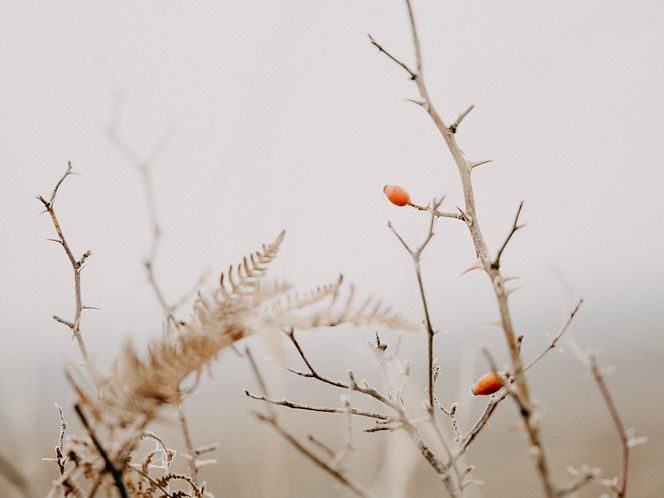A common mistake many authors make when writing about plants has to do with when they bloom. I've seen Queen Anne's lace described as an early spring flower in one novel, and in another the heroine gathered lavender and violets at the same time.
It's important to understand that all deciduous plants have seasons when they're in bloom or bearing fruit. While some plants have a long blooming season, many only bloom during a particular season. Some only bloom for a few weeks each year.
So here is a list of many common plants and their approximate bloom times. Note the importance of the word approximate. Bloom times vary according to region and the conditions in a given year, but for the purposes of your story this rough guideline should be helpful. Just remember if your story is set in a more extreme climate - whether that is hot or cold - the timing will be different. Most regions have some kind of extension agency or local gardening group who could help you if you need detailed, location-specific information.
The lists are arranged first by season, and within each season the plants are listed in alphabetical order by common name, with the latin name in parentheses after. And for those of you unfamiliar with latin names, "spp." means "species, plural" - used when there are multiple varieties of a plant with the same or similar bloom times. Where specific months are given, they apply to the northern hemisphere.

Winter:
Hellebores (Helleborus spp.) (usually February)
Purple Deadnettle (Lamium purpureum) (January-April)
Snow drops (Galanthus species) (January-February)
Witch Hazel (Hamamelis spp.) (October-November, OR January-March, depending on the variety.)

Spring:
Anemone, a.k.a. Poppy Anemone, a.k.a. Windflower (Anemone coronaria) (mid to late spring)
Apple Tree (Malus pumilia) (April-May)
Bleeding Heart (Dicentra spp.) (Late Spring)
Camellia (Camellia spp.) (February-March)
Chives (Allium schoenoprasum) (March-May)
Clover, White and Red (Trifolium repens, T. pratense) (Spring through late summer or early fall)
Columbine (Aquilegia spp.) (late Spring)
Comfrey (Symphytum spp.) (mid to late Spring)
Crocus (Crocus spp.) (early Spring)
Dandelion (Taraxacum officinale) (varies wildly. In warmer climates it blooms mostly in early spring. In cool climates it can bloom throughout spring and summer.)
Daffodil (Narcissus spp.) (early Spring)
Hawthorn Tree (Crataegus spp.) (May-June)
Hydrangea (Hydrangea spp.) (from mid spring until late summer or fall)
Plum Tree (Prunus spp.) (March-April)
Rosemary (Rosmarinus officinalis) (sometimes as early as February in mild climates, but usually April or May)
Trillium (Trillium spp.) (April-June)
Tulip (Tulipa spp.) (early to mid spring)
Wild Violet (Viola spp.) (early spring, sometimes as early as late February)

Summer:
Black Eyed Susan (Rudbeckia hirta) (late summer--August-September)
Borage (Borago officinalis) (begins in late spring and continues putting on blooms throughout the summer)
Calendula (Calendula officinalis) (June-September)
Chicory (Cichorium intybus) (July-September)
Cornflower, a.k.a. Bachelor Button (Centaurea cyanus) (June-July)
Daisy (Bellis spp.) (June-July)
Echinacea (Echinacea purpurea) (late summer--July-August)
Heather (Calluna vulgaris) (July-September)
Iris (Iris spp.) (May-June)
Lavender (Lavandula spp.) (late June-late July)
Peony (Paeonia spp.) (May-June)
Poppy, California (Eschscholzia californica) (start in late Spring, bloom throughout the summer. In warmer climates they bloom as early as February.)
Poppies, Oriental (Papaver spp.) (May-June)
Queen Anne's Lace, a.k.a. Wild Carrot (Daucus carota) (late summer--July-August, sometimes into September)
Rose (Rosa spp.) (late May-September)
St. John's Wort (Hypericum perforatum) (May-August)
Sunflower (Helianthus spp.) (July-August)
Vervain (Verbena officinalis, Verbena hastata) (June-July)
Yarrow (Achillea millefolium) (sometimes starts in late spring, blooms throughout summer)

Fall:
Anemone, Japanese (Anemone hupehensis) (September-December)
Aster (Aster spp.) (late August-September)
Chrysanthemum, Mum (Chrysanthemum spp.) (Late August-throughout the fall)
Crocus (Crocus spp.) (there is a fall-blooming variety)
Dahlia (Dahlia spp.)(August-September)
Goldenrod (Solidago spp.) (late summer to early fall)
Tansy (Tanacetum vulgare) (late summer-fall)
Obviously this list is not comprehensive. Flowers come in endless varieties. Most of the plants on this list will be found in temperate climates. If you don't see something you're looking for on the list, leave a comment and I'll do what I can to help.
Photos in order of appearance by Ruxandra Mateiu, Wendy Morris, Annie Spratt, Nadia Valko, and Kasia Wanner, courtesy of Unsplash.
If this post inspired or informed you, or just made you happy, feel free to buy me a cup of ko-fi. Your support helps with the cost of web hosting and other expenses, allowing me to spend more time creating posts for you.


Comments